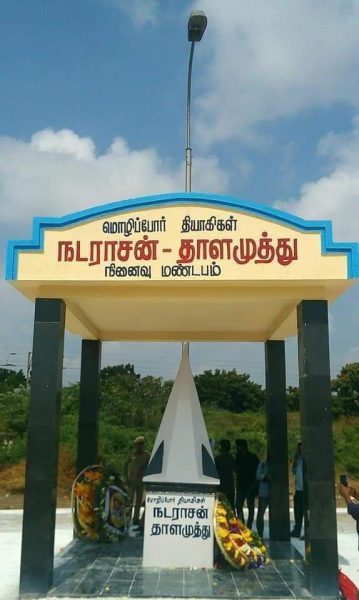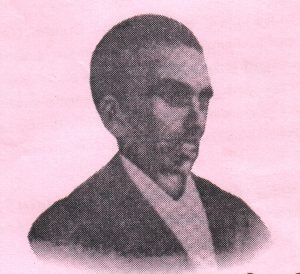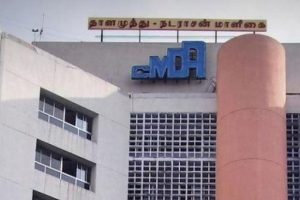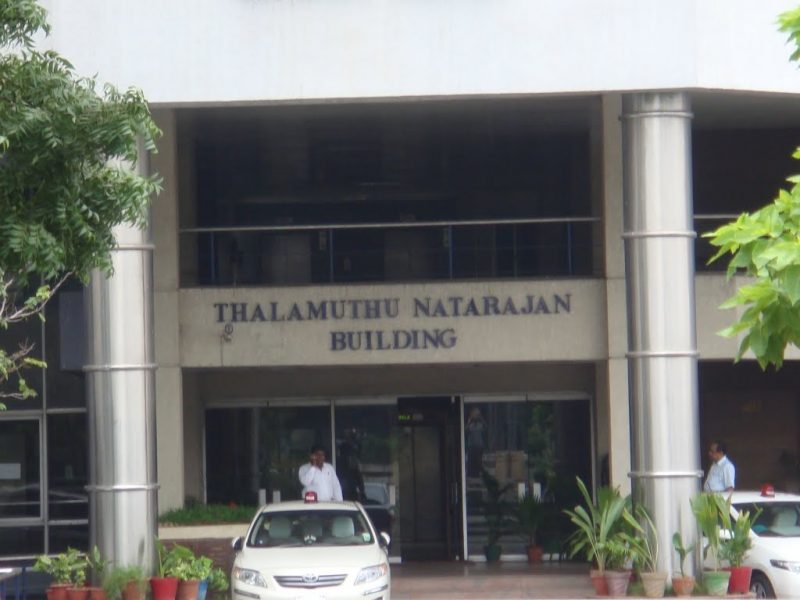
In anti-Hindi protests, Dalits seek recognition for community icon

Tamil Nadu is a state where differences between Dalits and the Backward Classes have prevailed for years. Of late, the Dalit intellectuals, through their research and activism, have started asserting their identity in the political, economic and cultural tapestry of the state.
In carrying the Dalit assertion forward, a prominent political party, the Viduthalai Chiruthaigal Katchi (VCK), announced that it is going to commemorate the sacrifices made by the anti-Hindi fighters for 10 days, starting this year.
In a statement released on January 14, VCK said that starting 2022, the party will commemorate ‘Thaai Thamizh Kaavalargal Veeravanakka Naal’ (literally, Custodians of Tamil Language Memorial Day) ever year between January 15 and January 25. Notably, the party in the past observed the anti-Hindi agitations day only on January 25.
What then could be the reason for the party to suddenly decide on commemorating the anti-Hindi agitation memorial event for 10 days? The answer lies in the sacrifice of L Natarajan, who is nearly forgotten and pushed to the second place in the state’s history of anti-Hindi agitations.
A Tamil who refused to tender an apology
The anti-Hindi agitations in Tamil Nadu happened in three phases. The first was from 1937 to 1940, the second between 1946 and 1950, and the third in 1965.
The first phase of anti-Hindi agitations happened due to the decision of the then Premier of Madras Presidency, C Rajagopalachari, to make Hindi a compulsory subject in schools. Even after protests, the government sent out an order on April 21, 1938, bringing in the rule. Opposing the order, Periyar EV Ramasamy, a rationalist, staged a protest.

On the same day, a 20-year-old Dalit youth, L Natarajan, was also arrested for participating in the anti-Hindi agitations. Natarajan was sentenced to seven and a half months in jail. On December 30, he was admitted to a government hospital for stomach pain. On January 15, 1939, Natarajan died during treatment.
Natarajan’s sacrifice was hailed by Dravida Munnetra Kazhagam (DMK) founder CN Annadurai, who was then a rising start in the political horizon of Tamil Nadu and was known for delivering fiery speeches that appealed to crowds.
Also read: More history may unravel as Tamil estampages from Mysuru move to Chennai
“Before he (Natarajan) was admitted to the hospital, police officials tried to cajole him into giving a letter of apology for taking part in the agitations. In return they promised to release him. However, Natarajan rejected the idea and instead chose to sacrifice his life,” claimed a statement released by VCK.
A martyr overshadowed by caste differences
It has been widely accepted that Natarajan was the first person who attained martyrdom during the anti-Hindi agitations. After Natarajan’s death, another protestor, named Thalamuthu, was arrested by the police on February 13, 1939. He also died as a prisoner on March 12 that year. It is to be noted that Thalamuthu was a Nadar, a Backward Class.
Both the martyrs were cremated in a graveyard at Moolakothalam and the memorial built there reads ‘Natarajan – Thalamuthu’. Notably, Natarajan’s name was written first. However, after a few years, people would take Thalamuthu’s name first while referring to the agitation and the sacrifice.
“Over a period of time, parties involved in the agitations looked for political mileage. At a time when Tamil was used as a tool to get people together, a particular social problem (caste) was ignored. The chronology of the names was changed (people would take Thalamuthu’s name before Natarajan). This change in the chronology of martyrs’ names had the potential to make the contributions of other communities disappear,” wrote Stalin Rajangam, a Dalit scholar, in one of his articles.

Above that, it is interesting to note that the death anniversaries of these two martyrs were not commemorated as ‘Anti-Hindi Martyrs Day’. Instead, January 25 was chosen as ‘Anti-Hindi Martyrs Day’, because during the third phase of the anti-Hindi agitations, i.e. around 1965, a DMK member from Trichy, named Chinnasamy, self-immolated and died for Tamil cause on January 25. DMK patriarch M Karunanidhi tried some course correction when, during his first term as a chief minister between 1969 and 1976, one of the government buildings was named ‘Thalamuthu Natarajan Maligai’.
No politics in names, please
While the VCK’s statement says that Thalamuthu was arrested on February 13, 1939, other historians claim he was arrested on September 13, 1938, a couple of months before the arrest of Natarajan.

Tamil scholar Senthalai Gowthaman said there should be no politics in the chronology of names. “Since Thalamuthu was arrested first and was older than Natarajan by four years, people remember him first and say ‘Thalamuthu Natarajan’. Moreover, as per Tamil alphabetical order, Thalamuthu’s name comes first. Having discussions like these and fighting over names will be a regressive step,” he said.
Also read: Death by stray bullet: Should TN police take up simulator training?
VCK Villupuram Lok Sabha MP D. Ravikumar said that it is disheartening to note that untouchability is practiced even in the sacrifice of one’s live.
“The dates we mentioned in our statement were already documented by many. The demand to bring Natarajan’s name to first place is not only because of his contribution, but also to give recognition to the whole community. Annadurai himself said that a statue would be installed where Natarajan and Thalamuthu would be standing on either side of Periyar. Annadurai said this because he recognised the contributions of both the communities. However, his dream of setting up such a statue is still a dream,” said Ravikumar.


